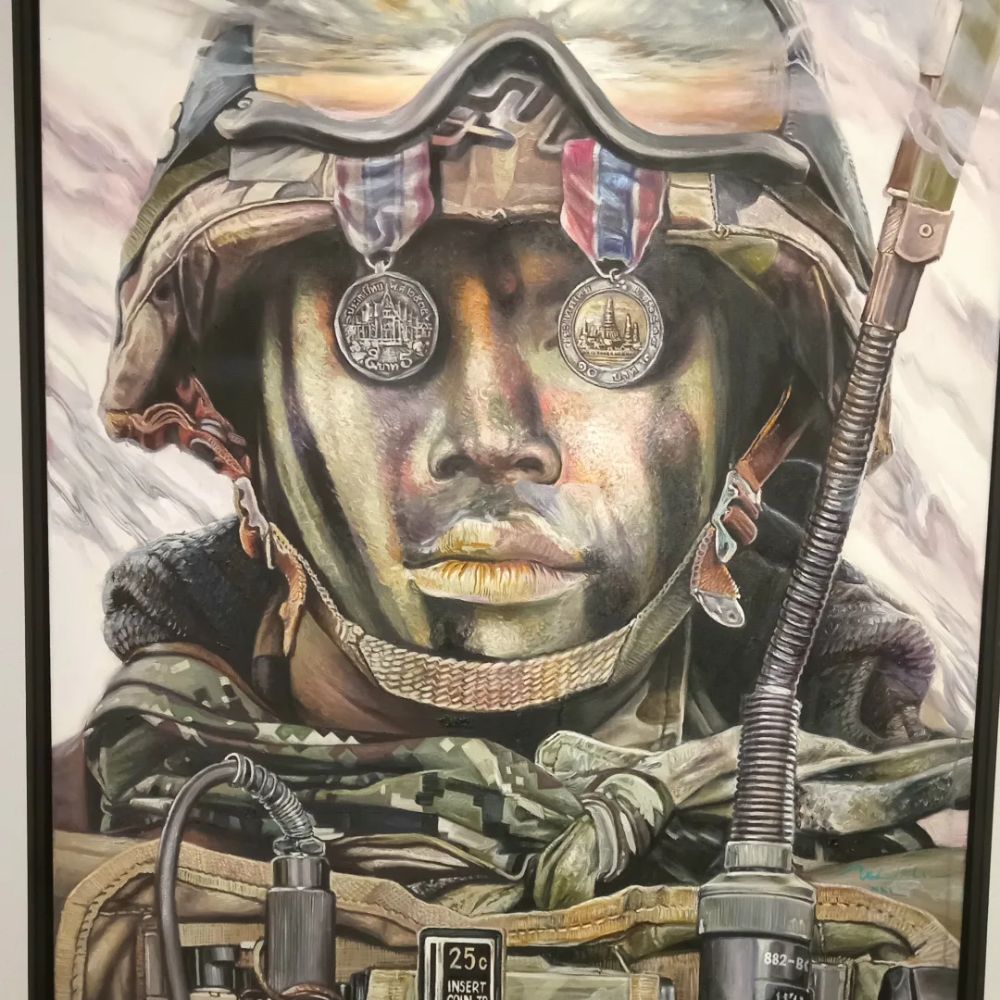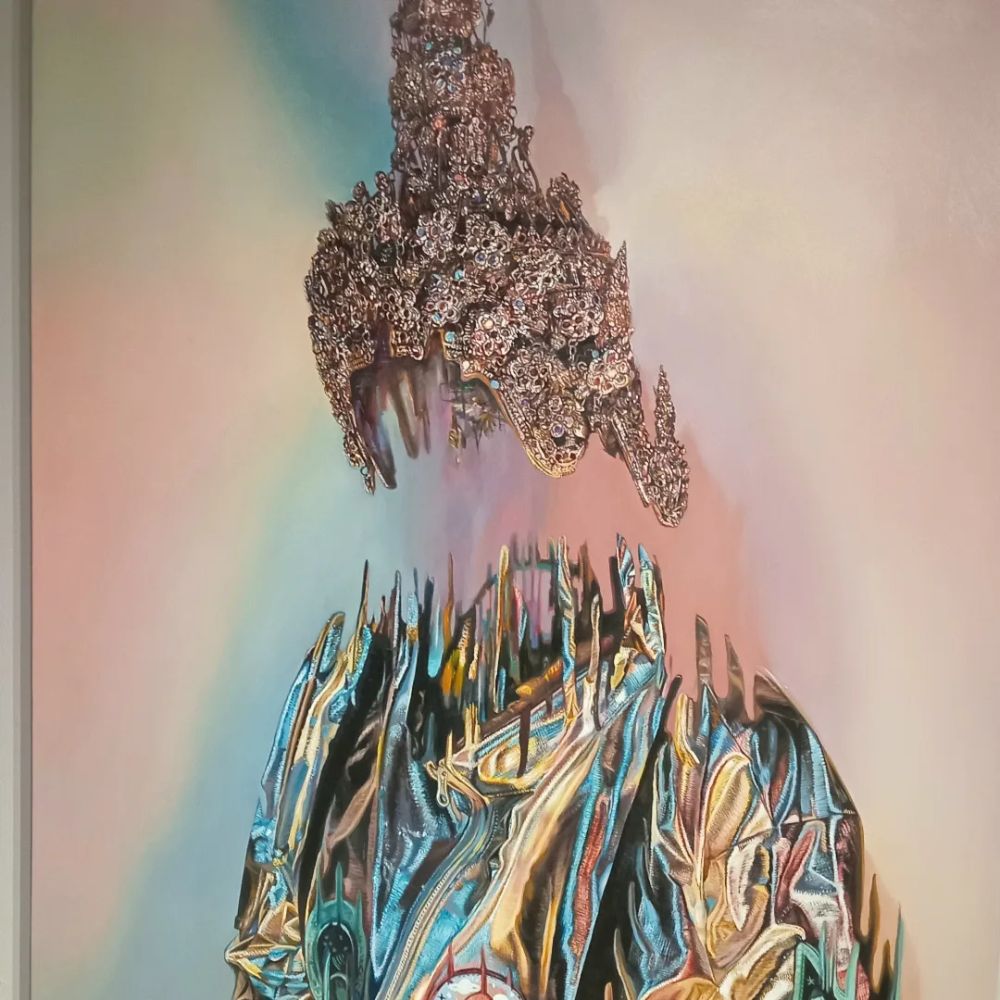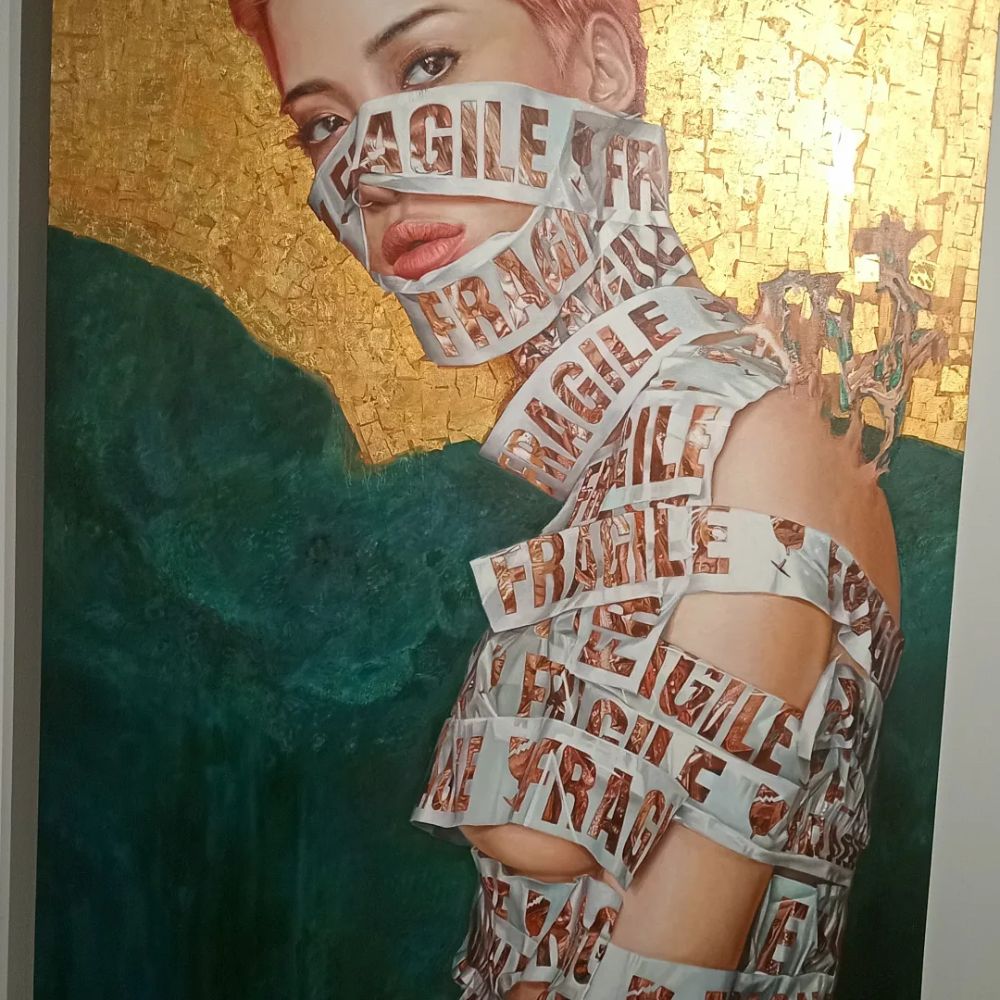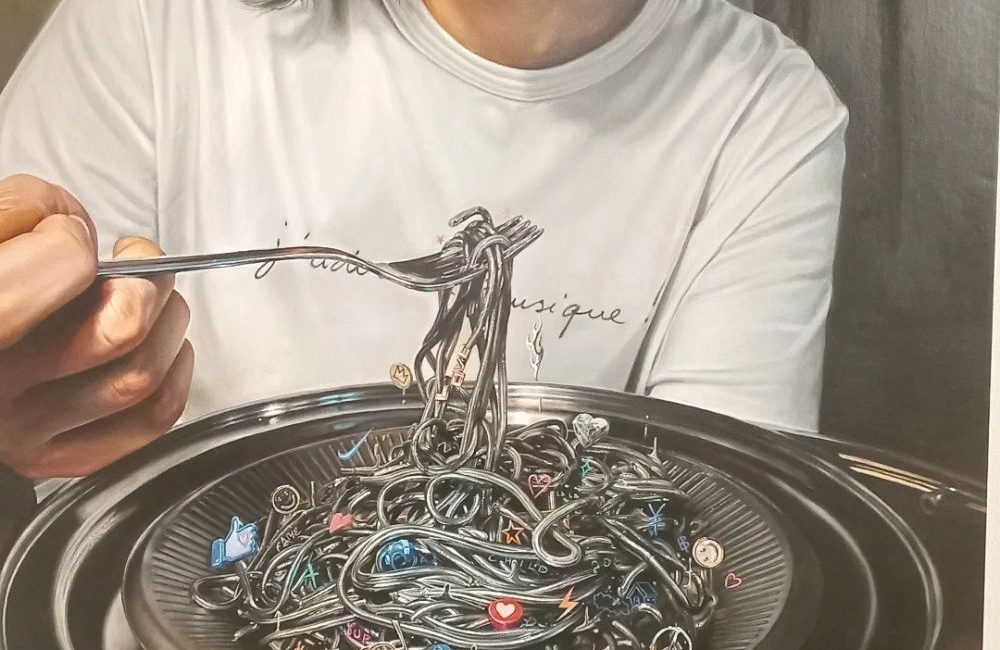“The artworks, grand in scale but introspective, embody the paradox of what people, numbering in the millions around the globe, relentlessly seek and strive for – a quest for emotional security, a pursuit commonly known as ‘stability’.”
Introduction to The Illusion of Stability exhibition
After visiting the sacred Buddhist ruins of Ayutthaya, Thailand I returned to Bangkok and spent some time in Talat Noi, a historically important, Chinese-influenced “vintage” area in central Bangkok near the river (more on that in the next post). There was a new art exhibition in that area in a gallery at the River City Centre. The first solo exhibition, The Illusion of Stability, by the internationally acclaimed artist WAL, also known as Wal Chirachaisakul on display from March 21 to April 23 2024. It was stunning but also philosophically provocative considering the current political situation in Thailand. The curated artworks, without explicitly referring to politics, covered themes of diet, junk food, lack of “nutrition,” material and inherited wealth, military power, aristocratic/royal privilege, death, beauty, the fragility of “woman” and our “bodies” and “souls.” Here is my brief review of the exhibition and works below.
The River City Bangkok Art Centre is not what one would expect from a contemporary art gallery. Having spent years in London and visiting the many galleries there (as well as other major capital city art centres), it was strange to see art exhibits and galleries in a shopping mall for those with expensive tastes. Nonetheless, the exhibition immediately caught my eye among the various others on show there. The introduction to the exhibition reads:
“The artist fervently hopes that this exhibition will encourage viewers to explore what they currently hold. Sometimes, what humans perceive as the utmost security and certainty might also be a manifestation of ‘instability’.”
There were several paintings that included skulls, gold coins, treasure boxes, golden masks with eyes closed, beautiful women eating “silver” and “gold” caskets and an army/military person with coins for eyes. The presence of death, money, consumption and the military in these works was a clear theme. Other works dealt with the fragility of our lives and souls, with the words “body” and “soul” on the floor and pillars, and “joy” and “fragile” in the paintings themselves, as well as provocative titles such as ‘The Immigrant’ and “The Goal” and “How Fragile We Are.”

Another theme WAL focused on is woman/the feminine and its fragility yet objectification, with one woman wrapped in postage tape bearing the words fragile. Interestingly he used non-Thai (or mixed race Thai) women for several of these images too. One of the paintings depicted a woman eating a silver casket had the words “Joy: painted in gold behind her. Another had a woman wearing a T-Shirt with the words in French “I love music” eating metal coils. On the one hand, it was all too obvious what he was saying, on the other hand, perhaps not. One had to read into the works what could possibly be meant by them. Other works depicted women in more powerful poses and stances, playing guitars together against a backdrop of street art, women’s liberation via music and the freedom to wear what they want.
The most cryptic/interesting artworks (for me at least) were the paintings of the traditional Thai Chada headdress without any head wearing it (an invisible head) which also seemed to be melting. A reference to the intense heat/burning season weather in Thailand, perhaps or lack of political/spiritual leadership? Another particularly striking painting was a skull atop some kind of Buddhist ritual offering plate with the words “RETIRED” painted in gold, with coins pouring out of its eyes and surrounding it. A message perhaps of how futile accumulating wealth and greed is when we all face the same “retired end” of death.

When I visited Thailand, I was surprised to learn that it is still one of the few Asian countries which has the lese-majeste laws that state a person can be prosecuted and imprisoned for criticising the royal family. Generally seen by most liberal, democratic nations as an illiberal law indeed, and one whose use in Thailand has become an increasing concern of the UN on human rights on freedom of opinion and expression. Considering how “liberal” Thailand is in other aspects (particularly in relation to “sex tourism,” a grim phrase if ever there was one) such “gagging” of public opinion was odd indeed, especially for a Brit like myself used to seeing the British Royal Family regularly mocked and satirised in publications like Private Eye and comedy TV shows, like Spitting Image. Another Asian country that has such laws is Bhutan, which has only recently had some kind of democratic accountability instituted there.
For that reason, the exhibition by WAL, although perhaps not so obviously or intentionally, seemed to be even more so a brave and powerful symbolic critique of greed, organised religion, the military and aristocratic wealth and how death strikes even those with masses of material wealth. Of a youth and nation prevented from speaking openly and freely about such matters, according to most of the young Thai people who spoke about it to me privately (for the record I am not involved in any Thai political movement though and am merely reporting what I heard in person while there). In fact, while I was in Thailand I visited mainly Buddhist temples and it seemed “on the surface” at least to be a very liberal, free, well-developed country that many foreigners wanted to visit and understandably even settle there.

Most of all, I came away with a message of the glaring sense of a “lack of genuine nourishment and fulfilment’ mentally, spiritually and physically, despite excess luxury and wealth, and the mass commodification and objectification of women. A condemnation of “mass development,” luxury brands and internet technology too it seemed.
The artist WAL was not present at the gallery, so I did not get a chance to ask him personally about the works. Thus, I leave you to come to your own conclusions/ideas about them, as a picture can say a thousand words, and different minds have different perceptions. Here are some photos of the artworks I took while there. The exhibit runs until the 23rd April so if you are in Bangkok over the next few days, do go and see it, for the artist’s stunning painting skills alone.
Dedicated to the beautiful Thai people and their stunning land that so many globally enjoy, consume and profit from.
See more
Thailand: UN rights expert concerned by the continued use of lèse-majesté prosecutions
Exhibit photos (Dakini Translations)
Dakini Translations (For other art reviews and articles about art)


